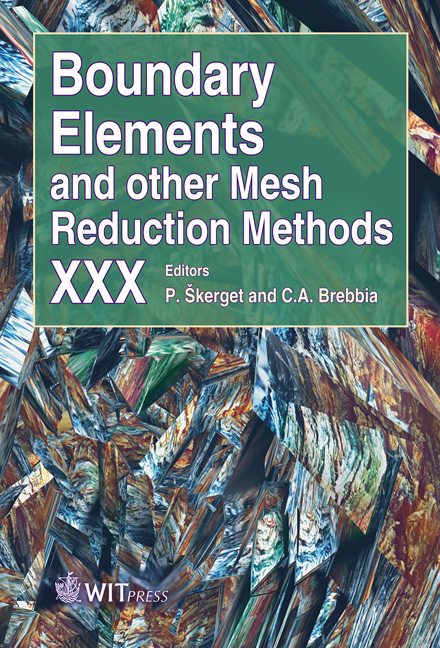Adaptive Cross Approximation Based Solver For Boundary Element Method With Single Domain In 3D
Price
Free (open access)
Transaction
Volume
47
Pages
10
Published
2008
Size
699 kb
Paper DOI
10.2495/BE080211
Copyright
WIT Press
Author(s)
T. Grytsenko & A. Peratta
Abstract
The approach presented in this paper is based on the Adaptive Cross Approximation (ACA) applied to BEM-derived matrices. The ACA method is purely algebraic and does not require information on the kernel. In this way, it offers an interesting alternative to the well established Fast Multipole Method. The algorithm uses a hierarchical approach for the matrix storage and manipulation. This paper describes the assembly approach for the usual H and G matrices coming from BEM equations into a hierarchical coefficient matrix AH. The efficiency of the developed scheme is tested for a potential problem involving a 3D unitary cube, and then the method is applied to an electrostatic problem involving an anatomic model of the human body. This 3D example consisting of 80 000 degrees of freedom could easily be solved in a low specification PC. Keywords: boundary elements, adaptive cross approximation, hierarchical matrices, linear systems of equations. 1 Introduction This paper considers some technical aspects related to implementation of the Adaptive Cross Approximation (ACA) algorithm [1] to general potential problems solved by the collocation Boundary Element Method (BEM). The great advantage of the ACA algorithmis that it is purely algebraic and does not need to operate with the kernel. The algorithmuses a hierarchical matrix storage approach [2] where the matrix is split into many blocks classified into two categories, weakly and strongly coupled. The former are off-diagonal blocks which represent remote interactions between source points and field elements, and therefore can be approximated by low-rank matrices. For this purpose the ACA algorithm is used [2]. These blocks
Keywords
boundary elements, adaptive cross approximation, hierarchical matrices, linear systems of equations.





